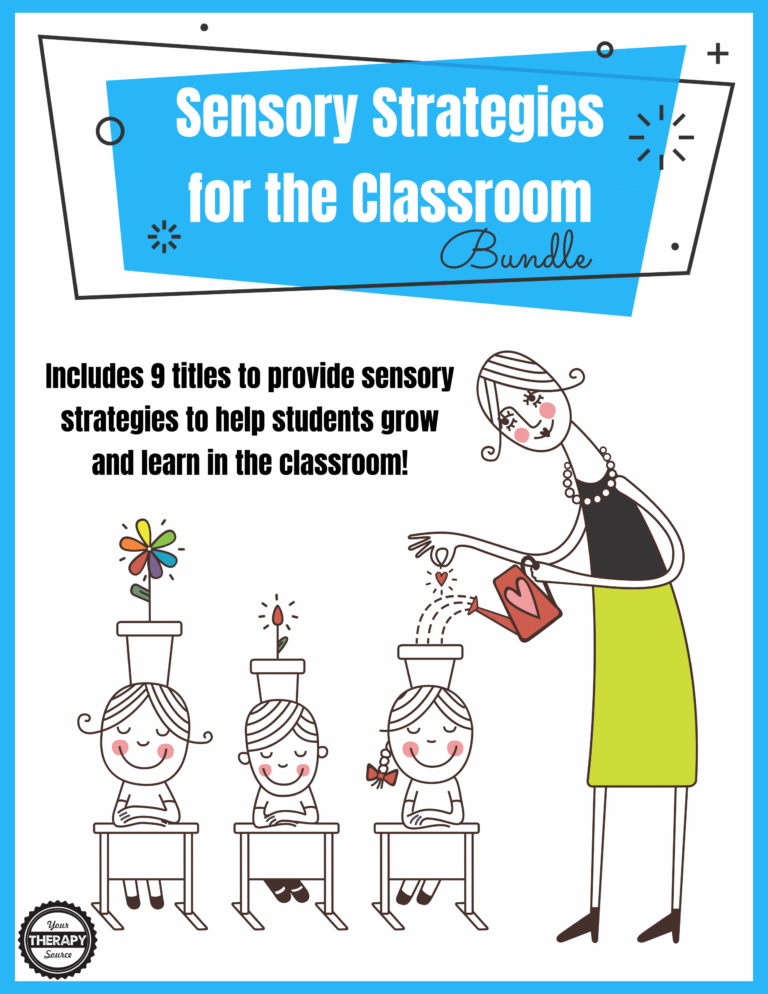How to Deal with Sensory Overload at School

At the start of the school year, during special events or holidays or anytime after a school break, students may have a difficult time adjusting to a new routine, any changes in the classroom environment or even different students. Learning how to deal with sensory overload at school is important for all educational staff and parents.
One of the most effective ways to avoid sensory meltdowns is to prevent them from occurring in the first place. Here are some suggestions on how to prevent and deal with sensory overload at school. Of course, these tips are only to provide a general overview. Consult an Occupational Therapist for help on specific students.
Be Aware
Take a moment to look around the classroom to determine what changes have been made. Will the students need any environmental modifications right away in order to have their bodies in a ready to learn state? All students benefit from a sensory balanced environment. When teachers practice a universal design approach in the classroom, it helps everyone.
How to Deal with Sensory Overload at School – Tactile System
Here are some suggestions regarding the tactile system (sense of touch) to prevent sensory overload:
- approach all students from the front so they can see who or what is coming their way.
- never force a student to touch anything.
Preventing Sensory Overload at School – Smell/Oral
Suggestions for how to deal with sensory overload from smells or oral input here are some suggestions:
- avoid wearing perfumes.
- if the classroom is using any sort of essential oils or scented sprays make sure all of the students tolerate the scents.

Preventing Sensory Overload at School – Auditory
Schools can be loud places. Whether it be students, staff, lawnmowers, etc it is can easily escalate the noise levels. Suggestions for how to deal with sensory overload from auditory input are:
- offer a quiet space for students to retreat if necessary.
- keep headphones available for any students if needed to provide favorite music if beneficial to learning.
- keep noise at a reasonable level.
Preventing Sensory Overload at School – Visual
Many teachers enjoy decorating their classrooms and hanging up students’ accomplishments. This can quickly lead to a visually over-stimulating environment. Here are some tips on how to prevent sensory overload from visual input:
- reduce complicated patterns on the walls or carpets.
- avoid fluorescent light bulbs that can flicker or make noise.
- don’t over complicate visuals with extraneous decorations or designs. Keep it as simple as possible.

How to Prevent Sensory Overload at School with Movement Activities
Students have varying sensory preferences when it comes to movement. When there is extended sedentary periods of time, some students will become lethargic but other students may become overly active and fidgety. It is important to provide a balance of movement breaks throughout the day to reduce sedentary time and provide a brain break. Here are several suggestions on how to prevent sensory overload at school following movement breaks:
- provide frequent movement breaks with the same routine each time so students know what to expect.
- rhythmic movements such as rocking are calming and may help to prevent sensory overload.
- proprioceptive activities can help to calm the body and get students ready to work. Read more about proprioceptive activities for the classroom.
Here are suggestions to change your own actions to deal with sensory overload at school:
- Talk in a low, calm voice. If we start the lesson or activity out with a quiet, low, calm tone of voice children will model our behavior.
- Minimize your own movement. Stay in one place while you instruct the class so the students can direct their focus to one location.
- Minimize your own gestures. Try not to only stay in one place but also try to start the lesson out minimizing your gestures. Avoid talking with your hands, pointing and general fidgeting yourself.
- Change the lighting. If possible dim the lighting to encourage the students to return to a calm state with their bodies ready to learn.
- Direct the student’s attention to an area that is organized, clutter-free and has limited visual distractions. Perhaps have an area in the room that has decreased visual input. Position yourself in that area so the students can focus their attention directly on you.
Set Realistic Expectations
Set realistic expectations. Make sure students are educated on what your expectations are to maintain a peaceful classroom. Keep in mind as teachers and therapists, students can only sit still for so long. Provide movement and brain breaks throughout the day. Physical activity can help to reduce stress. Be aware that all students are different and certain students may lack the self-regulation skills to remain calm during the school day. Try teaching students some calming strategies for the classroom. Contact an Occupational Therapist for specific suggestions.
More information on how to deal with sensory overload in the classroom
The Sensory Lifestyle Handbook (digital download) is your strategy guide for turning sensory diets and sensory activities into a sensory lifestyle. Written by Occupational Therapist, Colleen Beck, The Sensory Lifestyle Handbook includes a 133 page PDF document filled with information on the sensory system and the whole child, sensory diets and how to create a lifestyle for sensory success. This book is suitable for therapists, parents, teachers or anyone who wants to help children with their sensory needs.
The Sensory Strategies for the Classroom Bundle includes 9 digital downloads to help students to be ready to learn or participate in functional tasks. Click on each link to view more information about the 9 titles:
Typical Classroom Sensory-Based Problem Behaviors & Suggested Therapeutic Interventions ($19.95)
Sensory Tools for the Classroom ($3.99)
Cut and Paste Sensory Diet for Home and School ($8.99)
Breathing Breaks ($5.00)
Classroom Activity Posters ($6.99)
Self-Calming Strategies ($3.99)
Calming Strategies for the Classroom ($3.99)
Calm Down Cards ($4.99)
Emotions Packet ($4.99)
All of the titles are digital documents and will be available immediately following payment. FIND OUT MORE.





